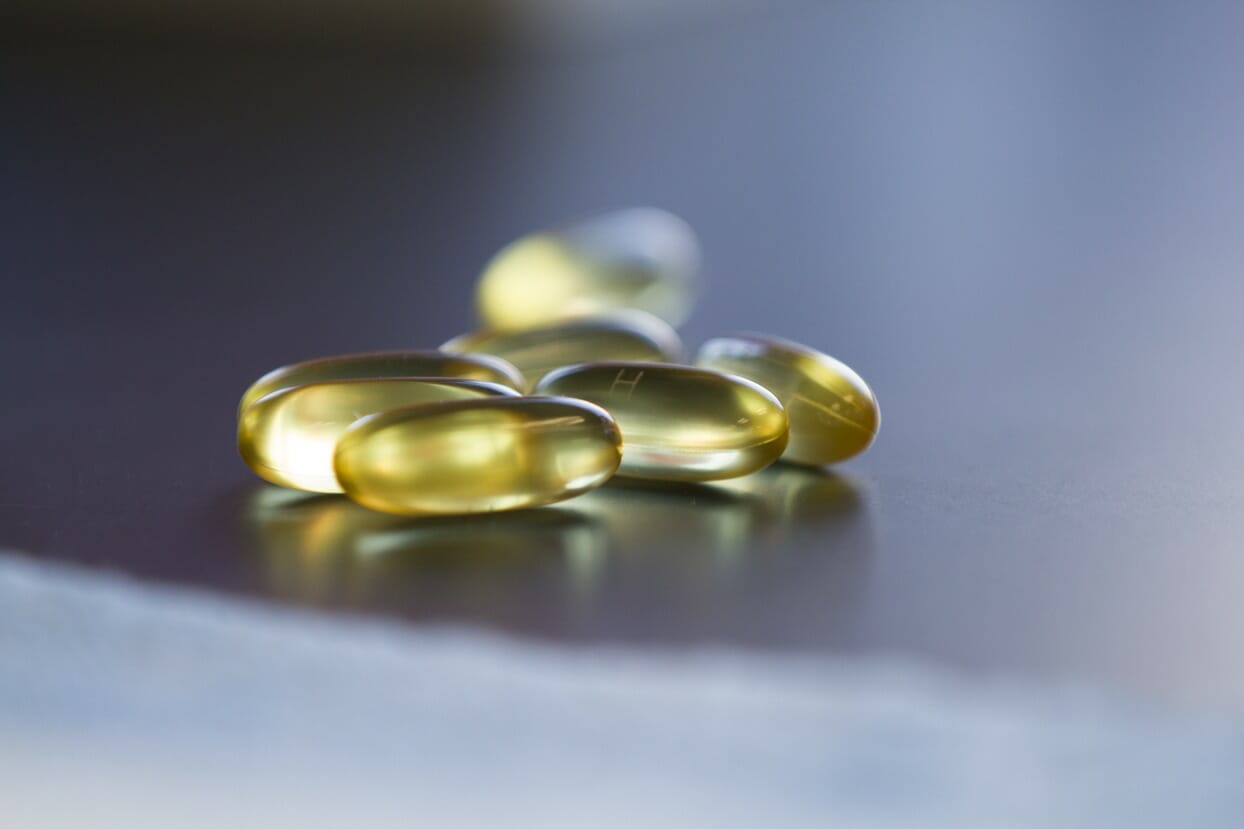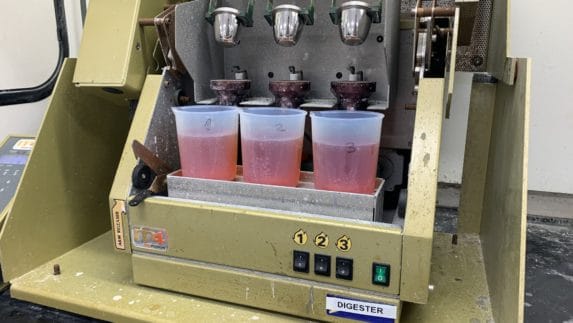The fish used to produce Amway Nutrilite™ Omega-3 softgels are special. So is their diet.
The integrity of the omega-3 softgel bottle labels is so important that they’re kept behind locked doors.
And every single softgel is inspected with the human eye.
Tour the new state-of-the-art Nutrilite™ Omega-3 softgel production facility in Ada, Michigan, U.S., and you’ll quickly see how much care is taken to ensure the product is high-quality, safe and worthy of customers’ trust.
“The two most important aspects of our operations are producing high-quality supplements and ensuring our customers receive products when they need them,” said Michael Moreno, who directs nutrition manufacturing operations for Amway in Michigan.
The two most important aspects of our operation are producing high-quality supplements and ensuring our customers receive products when they need them.
Making omega-3 softgels to the rigorous standards of the Nutrilite™ brand, from raw material to finished product, is a 48-hour journey through production and packaging environments that are carefully controlled to ensure the purity of the product.
Employees perform multiple quality checks at each stage of production – more than 25 quality checks in all. Amway also is required to meet stringent U.S. Food & Drug Administration Good Manufacturing Practices (CFR 211: nutritional supplements grade), and performs regular equipment validation testing as well.
Nutrilite produces up to 1.3 billion omega-3 softgel capsules per year – and every one is inspected by an employee.
The new manufacturing plant is designed to respond quickly to changing market demands and reduce the time it takes to get orders to customers.
Nutrilite produces up to 1.3 billion omega-3 softgel capsules per year – and every one is inspected by an employee.
Raw material quality assurance
In the fjords of Norway, ocean-raised salmon are fed a blend of fishmeal containing anchovy, herring, capelin and menhaden from the Humboldt Current between South America and Northern Peru, well as soy, algae and barley protein.
The dietary blend of fishmeal and plants ensures the salmon oil concentrate used in the supplements contain a natural concentration of omega-3 fatty acids.
When the fish oil concentrate and other ingredients arrive at the plant loading dock, eight sample tests are performed in air-quality-controlled tents to check the chemistry. Microbiology tests also are performed in the onsite quality assurance lab.
Production begins
Once the raw materials have passed inspection, the production process can begin. There are two main parts of an omega-3 softgel: the gelatin capsule and the omega-3 oil formula.
Gelatin, which forms the softgel casing, is made by mixing dry powder gelatin granules with water and glycerin. The mixture is heated in a large melt tank and then undergoes a vacuum process to remove air bubbles.
“The melt tank’s automated cleaning system and flexible batch size capability help reduce time between production batches,” said Moreno.
Next door to the gelatin production room, the omega-3 oil formula is created by combining fish oil concentrate with precise measurements of vitamin E. To ensure freshness, all oil is used within 72 hours of its creation.
Encapsulation
Across the hall, in the encapsulation room, the gel and oil are vacuumed into the fill machine. The warm gel is slightly cooled to form sheets of gelatin, which are measured to ensure precise thickness. The sheets are fed through the encapsulation machine and cut into two softgel casing halves. The omega-3 oil is pumped into the capsule, and the halves are sealed.
After the weight and seams are inspected to confirm a complete seal and smooth aesthetic, the capsules are mechanically transported into rotating tumblers. Continuous motion prevents the product from sticking together or changing shape.
The encapsulation room can produce 1,000 softgels per minute.
Drying
The most time-intensive production process is the drying phase. Rotating tumblers full of freshly produced softgels are pumped with low-humidity air for 24 hours in the drying room. As soon as the softgels reach the appropriate hardness, the weight and thickness are tested and the product is ready to move to the finishing room.
Finishing and etching
In the finishing room, the capsules are mechanically fed into a sorting machine that removes product that is too big or too small. Next, employees visually examine each softgel under an ultraviolet (UV) light for bubbles, impurities or abnormal shapes. Softgels that pass human inspection enter a laser-etching machine that engraves an identification code. The capsules are then boxed and placed in the humidity- and temperature-controlled softgel warehouse.
To maintain the freshest product, Amway closely monitors sales orders and adjusts production to maintain a low inventory. All softgels are warehoused for no more than one month.
Amway closely monitors sales orders and adjusts production to maintain the freshest inventory of Nutrilite™ Omega-3 softgels
Packaging
One of the most technologically advanced phases of production is the integrated packaging line, which can turn out 80-130 bottles of softgels per minute. Infrared sensors ensure the proper quantity of gels is placed in each bottle.
The bottles are capped, and an electromagnetic lamp seals the foil under the cap. Then the bottles are X-ray checked and labeled. After a final scan ensures the labels are precisely aligned, the Nutrilite Omega-3 softgels are prepared to ship to customers around the world.
It’s about people
While multiple tests and strategic production flow help ensure high-quality products are delivered to customers quickly, manufacturing employees understand that their own dedication to quality and responsiveness are critical parts of the business.
“Our employees mirror the passion for this business that our Amway Business Owners have,” said Moreno. “It’s important that they own the costs, decisions, results, performance and quality of the product because our customers are business owners. We’re here to produce supplements of a quality they can use and sell with confidence and pride.”




